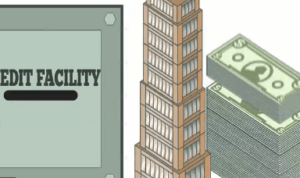A credit facility is a type of loan made available by banks to businesses or companies, which supports business to borrow or take money whenever it is required to cover up for its short term or long term needs over again without reapplying for a loan each time. This serves as a tank for drawing capital over an extended period of time without undergoing a separate line of credit.
There are various kinds of credit facilities such as revolving loan facilities, committed facilities, and letters of credit. This will be discussed later upon the precept of the article.

WHAT YOU SHOULD KNOW
- Do you know that a credit facility is made available for businesses or companies to draw capital over an extended period of time?
- A credit facility could be a revolving loan facility, retail credit facilities, or committed facilities and letters of credit.
- Credit facilities such as personal loans or credit cards often have their terms based on the financial state of the borrower’s (Businesses and companies) credit history.
How Credit Facilities Work
A credit facility is what is often in use by most businesses to. Support their financial needs over certain periods. This is broadly used to cover up for companies financial flops against selling shares of its stock. Companies usually go for credit facility based on the collateral that. May be sold or placed as a substitute without adding to or removing anything. From the terms of the original contract. This pro part of this system is that supports flexible. Repayment to the borrowers unlike other loans and it relates to the borrower based on the credit. State of the business and the credit history. The credit history shows them. How often you have been paying off your debt in the past.
A credit facility agreement
states the obligations of the borrower, loan warranties. Lending amounts, loan duration, penalties for defaults, interest rates. Repayment terms, and conditions, etc. At the start, it requires the contact information of each of the parties involved, followed by a summary (obligations of the borrower, loan warranties, lending amounts, loan duration, penalties for defaults, etc) and the definition of credit facility.
The repayment terms are detailed which contains the interest payment and the loan maturity. The date of payment is considered by if it is a term loan or not, the minimum payment amount, and the date for payment for a revolving loan.
Under the specific conditions, the credit facility should be able to state the legalities that could arise if a default occurs on a loan. These specific conditions should as well state the penalties the borrower could face if they default the payment. It states also the steps that can provide solutions if the borrower defaults the payment. It also states the laws or jurisdictions consulted if future contracts result in disputes under “A choice of law clause.”
Types of Credit Facilities
Firstly, credit facilities are of different kinds. The common varieties include:
A retail credit facility:
Certainly, this is a method of financing often in use by retailers and real estate companies. This can equally be seen as a type of loan. A retail credit facility is a form of a credit card.
A revolving loan facility:
Also, a Loan can be issued as a revolving loan facility to borrowers to enable them flexibly draw credit as well in repayment, it gives a flexible hand to the borrowers. This eventually has a fluctuating interest rate along the line of credit.
A committed facility:
Lastly, this variety is a source for short- or long-term financing agreements backed by a specific payment schedule, which can be fixed or variable interest rates. That is to say that the funds are provided with a maximum limit for a specified period of time over an agreed interest rate. A typical example of this variety is a Term loan.
from WordPress https://ift.tt/32XcUq2
No comments:
Post a Comment